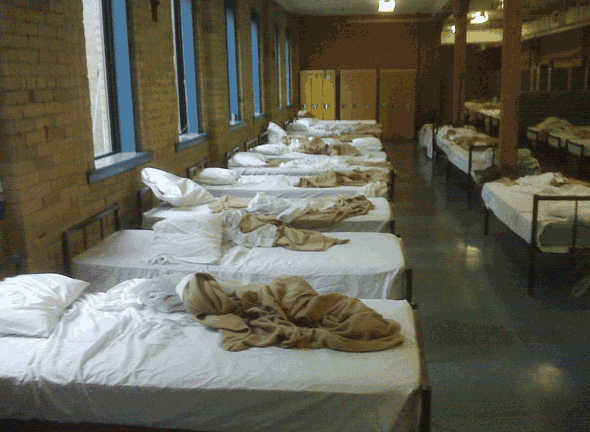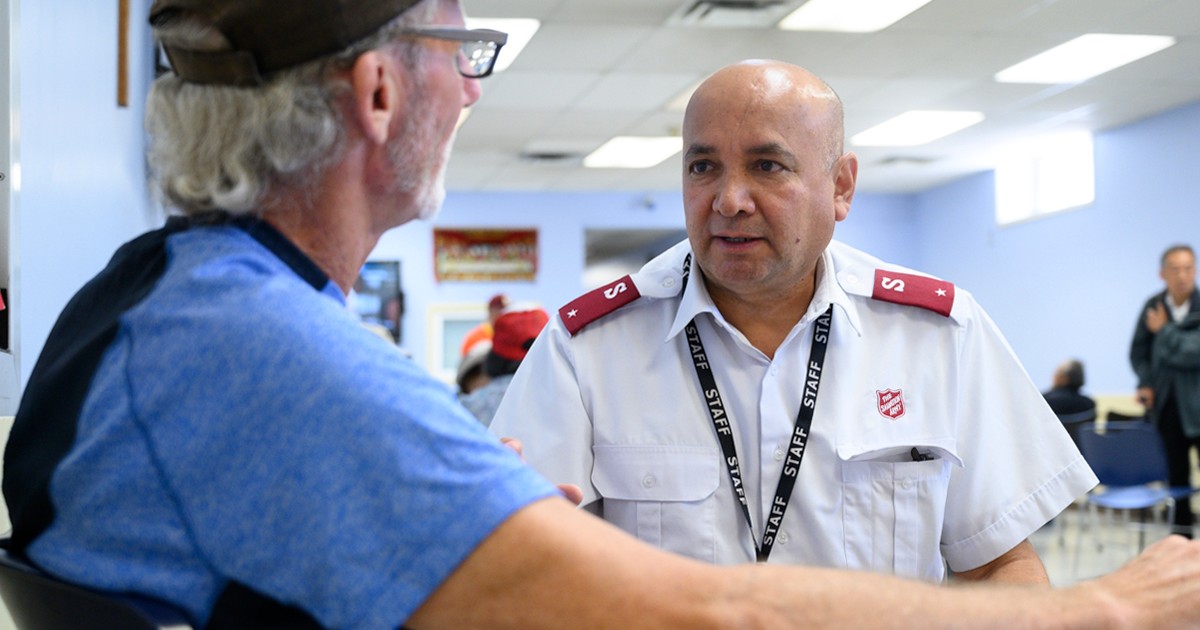 The Toronto shelter system spends about $1,650 per person for three hot meals and a cot for a month. When I heard that, I was astounded. There has to be a less expensive way to assist those on the streets who are living in desperate need.
The Toronto shelter system spends about $1,650 per person for three hot meals and a cot for a month. When I heard that, I was astounded. There has to be a less expensive way to assist those on the streets who are living in desperate need.
To find out, I decided to take a tour of three of Toronto's shelters.
My first stop is the Maxwell Meighen shelter, where I meet Major Chris Dickens, the executive director. Dickens, in full Salvation Army uniform, gives me a tour of this old building, the largest Salvation Army men's shelter in the city. There are a variety of sleeping arrangements, but the majority sleep in dorm rooms with about eight metal cots in each. Downstairs in the cafeteria, each guest receives three hot, nutritionally balanced meals per day. Each meal costs the Salvation Army about $4.80.
I ask Dickens why it costs taxpayers so much for a shelter bed each month. Dickens explains that on a day-to-day basis, shelters are paying plumbers to unclog toilets that have had clothing put in them or to replace an elevator control panel that someone urinated on.
“It adds up,” he says. “I would estimate that 70 percent of our guests have some form of diagnosed or undiagnosed mental illness, which sometimes results in bills that need to be paid. But there's more to it than that.”
“A Better Man”
Our tour then takes me to the Gateway shelter and I begin to see what Dickens is talking about. The Salvation Army isn't just providing three meals, a bed and plumbing repairs. They are engaged in transforming lives—they are fighting a war, and in the case of homelessness, the Army is winning some of the battles.
On the front line is the executive director of Gateway, Dion Oxford. He is passionately committed to the poor and provides assistance in a dignified way to those in need. I ask him the same question: Why does it cost so much to house someone in a shelter in Toronto?
Oxford names a few of the services provided by the shelter, including counselling programs, addiction-treatment options, primary-support workers, housing programs and chaplaincy.
In addition, he speaks of the laundry service that has been founded at Gateway. Guests who qualify can enter a six-month training program and learn the basics of business through a laundry service. Their biggest customer is themselves—they launder bedding from downtown shelters.
The Army is engaged in transforming lives—they are fighting a war, and in the case of homelessness, the Army is winning some of the battles
At the end of the course, the men have a new skill set, have made $10 an hour, received a certificate and $1,200 toward permanent housing. Not to mention dignity and the knowledge that they are helping to reduce the costs of the shelter.
I ask Oxford why he does this work.
“For selfish reasons,” he replies. “I leave this second home and go home to my family a better man.”
Benchmarking Success
On the final stop on my mini-tour, I meet Shannon Clarke, a front-line supervisor at Florence Booth House, a downtown Salvation Army women's shelter. Clarke and her family once found themselves using the shelter when their home burned down. As a result, she is now committed to helping guests of the shelter.
Clarke explains that she does her best to make sure that the women in this 60-bed shelter “have all of the comforts of home.” Guests sleep in a bare space, and their only privacy in the 47-person dormitory is a small locker to store personal possessions.
How do we know the hard work of those working for The Salvation Army is showing benefits? A sample of the facts provides hope:
» 56 percent of shelter guests at Maxwell Meighen stay less than
eight days.
» The Salvation Army has a successful 21-day alcohol rehabilitation program.
» It has set up training programs for shelter users such as Gateway's entrepreneurial laundry program.
The city's Streets to Homes program has assisted more than 2,100 shelter users to find permanent housing with a 90-percent success rate. Oxford has a room of Welcome Home kits ready for men moving into their new apartments, including a mattress, food and a keychain with helpful numbers to combat periods of isolation. The kits are handed out regularly.
I started this day convinced that cutting the per diem shelter rate would be a great idea for the city to balance the books. Through the tour, however, I began to realize that cutting funding here would be even more socially and financially expensive for the taxpayer.
The Salvation Army workers I met benchmark their success in the hope that they bring to those in despair. That's hard to measure, but when you see it firsthand you know it's real.
And in three hours, I saw a lot of it.
Neil Hetherington is the CEO of Habitat for Humanity Toronto. For more information, go to torontohabitat.on.ca









Leave a Comment